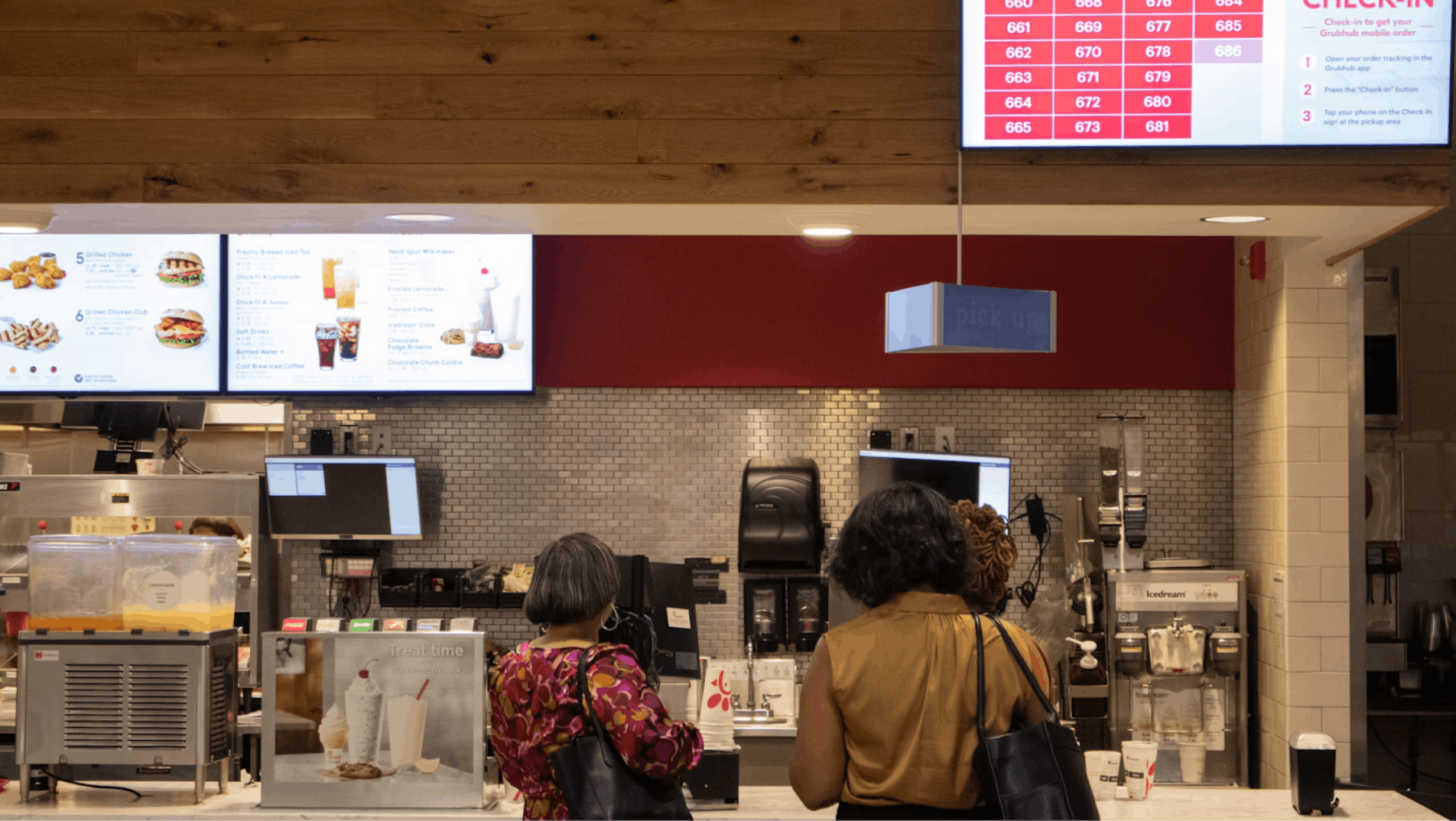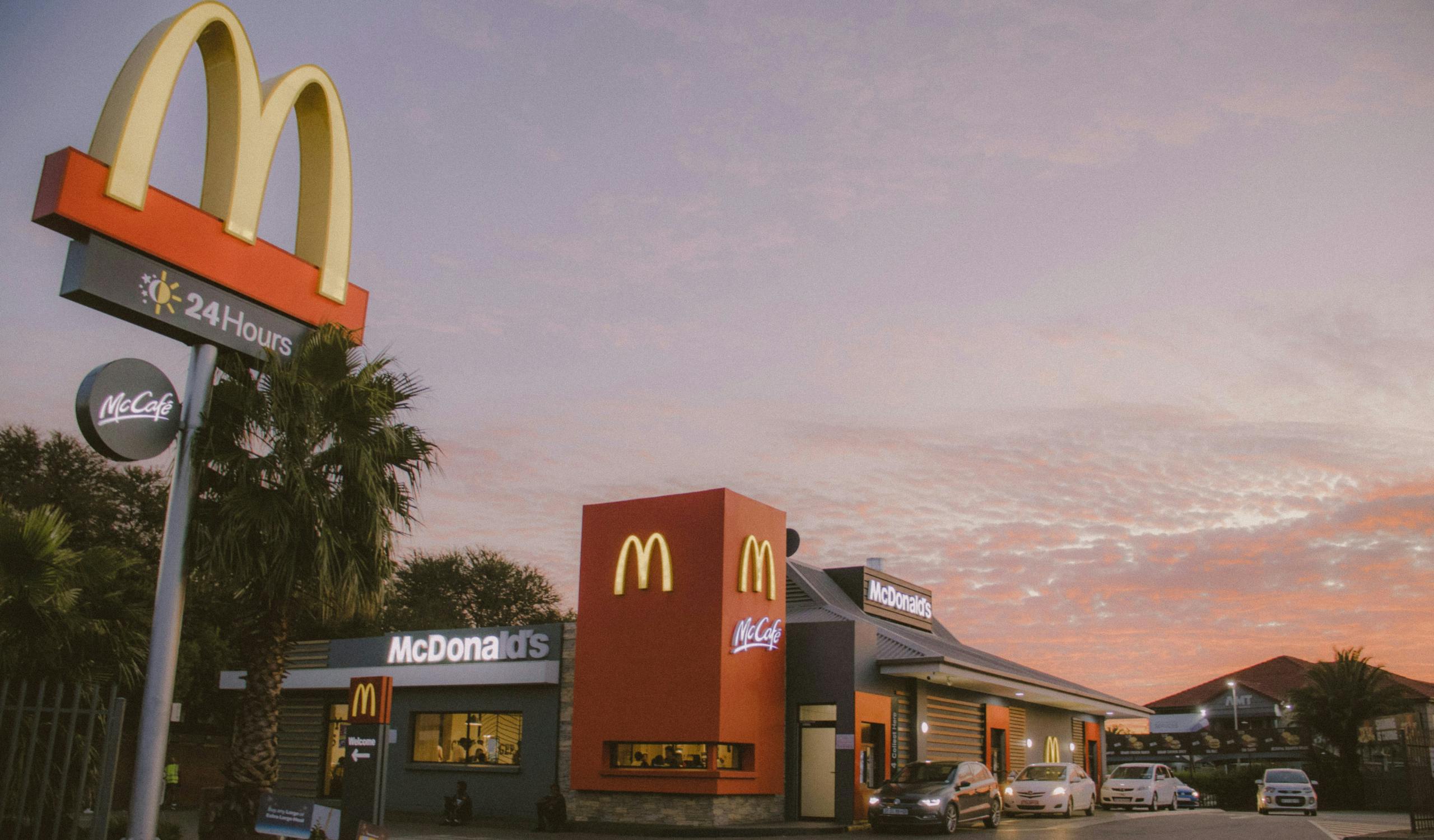
How to franchise a restaurant: A step-by-step guide for success
Table of contents
In the year 1919, Roy W. Allen opened his first root beer stand in Lodi, California. It was such a hit amongst the locals that by 1922, Allen partnered with his employee, Frank Wright, to open a brick-and-mortar business called A&W. Three years later, it became the first restaurant to franchise in the United States, paving the way for the modern fast-food franchise system we know today.
Franchising is an alternative path to traditional restaurant ownership. It gives entrepreneurs the chance to open a dining establishment while sharing the possible risk and reward. With a franchise, you can expand your restaurant’s brand without fronting the costs of opening new locations. Instead, other business owners, known as franchisees, can invest their money and time to run restaurants using your brand, recipes, and systems. The benefits of franchising, like faster growth and extra income from fees, come with challenges, such as legal requirements and quality control across multiple locations.
Otter, a leader in optimizing modern restaurant operations, has compiled a guide to help you turn your restaurant into a successful franchise. We'll cover everything from how to know if your restaurant is ready for franchising to marketing your franchise opportunity. By following these steps, you'll be well-prepared to join the ranks of successful restaurant franchises throughout the country.

What is a franchise restaurant?
A restaurant franchise is a business agreement where the owner of a restaurant brand (the franchisor) gives another business owner (the franchisee) the right to use their brand name, menu, and business system in exchange for royalty fees. The franchisee gets to open a restaurant using a proven business model, while the franchisor can grow their brand without investing all the capital themselves.
There are several types of restaurant franchises:
- Single-unit franchises: A franchisee owns and operates one location.
- Multi-unit franchises: A franchisee owns multiple locations within a specific area.
- Area development franchises: A franchisee has the rights to open a set number of locations in a region.
- Master franchises: A franchisee can sub-franchise to other individuals.
Well-known examples of restaurant franchises include McDonald's, Subway, Domino's, Taco Bell, KFC, Dairy Queen, and Pizza Hut, each of which has thousands of franchised locations worldwide. Smaller businesses often find a lot of success in franchising their establishments, including Otter client PONKO Chicken.
That’s good news, because the restaurant franchise industry continues to show strong growth. According to the International Franchise Association, quick-service restaurant (QSR) franchised units are projected to grow by 2.2% in 2025, reaching 204,366 establishments. The overall output of the QSR franchise sector is forecasted to increase by 5.4% in 2025, meaning it will outpace general economic growth for the second year in a row. Numbers like these are encouraging for restaurant owners considering franchising as a path to expansion.
Franchisor vs. franchisee
In a restaurant franchise relationship, there are two key parties, each with their own responsibilities and benefits.
A franchisor is the original restaurant owner. They've developed a successful concept and want to expand without opening every new location themselves, so they license their brand and business model to others. Famous franchisors include McDonald's, Subway, and Domino's Pizza.
A franchisee is the business owner who purchases the rights to operate a restaurant under the franchisor's brand. They invest their own capital and run the day-to-day operations while following the franchisor's established system.
What the franchisor provides:
The franchisor offers valuable assets and support systems, including, but not limited to:
- Brand name, logo, and intellectual property rights
- Detailed franchise staff training programs
- Ongoing operational support and guidance
- Marketing materials and brand guidelines
- Proven business systems and processes
What the franchisee is responsible for:
The franchisee takes on various operational and financial obligations in their particular location, such as:
- Initial franchise fees and ongoing royalties
- Operational guideline adherence and brand standard maintenance
- Hiring and training onsite employees
- Managing day-to-day operations
- Local marketing and customer service
The relationship between franchisor and franchisee, as well as a location’s success, is interdependent. The franchisor only flourishes by working with capable franchisees who maintain quality standards and grow the brand's reputation. Meanwhile, franchisees rely on the franchisor's established support systems, marketing power, and continued innovation to stay competitive.
For restaurant owners thinking about becoming franchisors, this relationship presents both opportunities and challenges. Let’s get into the nuts and bolts of restaurant franchising for both the buyer and the seller.

Real-world example of a successful franchise: McDonald's
McDonald's is the perfect example of the benefits that come with a successful franchise model. A highly standardized and replicable system makes it easy to scale across diverse geographic locations. Every aspect of a McDonald’s franchise, from menu items to operational procedures to restaurant design, is uniform, making it simple for franchisees to adopt the business model.
How does it work? McDonald’s provides each franchisee with a comprehensive training program, detailed operational manuals, and a robust support system, ensuring a consistent brand experience worldwide. The result speaks for itself: Forbes reports that in 2023, McDonald's earned a total profit of $15.4 billion from its global network of franchises.
By carefully considering these pros and cons, and learning from successful examples like McDonald's, you can determine whether franchising is the right growth strategy for your restaurant business.
How to franchise a restaurant

Turning your restaurant into a successful franchise requires careful planning and execution. Here's a step-by-step guide to help you navigate the process:
Step #1: Assess your restaurant's franchise potential
Before diving into franchising, evaluate whether your restaurant concept is truly ready for expansion. A franchisable restaurant typically shows:
- Consistent profitability over multiple years
- A strong, distinctive brand that stands out from competitors
- Systems and processes that are easy to replicate
- Customer loyalty and demand beyond your original location
To determine potential, ask yourself the following questions:
- Has my restaurant been profitable for at least 2-3 years?
- Is my concept unique enough to attract franchisees?
- Can someone else run this business using a detailed manual?
- Do I have the financial resources to develop a franchise system?
- Is there market demand for this concept in multiple locations?
If you answered "yes" to these questions, your restaurant may be ready for franchising.
Step #2: Create a franchise business plan
A comprehensive franchise business plan outlines your expansion strategy and financial structure. In it, you should include:
- Your chosen franchise model (single-unit, multi-unit, area development, or master franchise)
- Financial structure, including initial franchise fees, royalty percentages, and marketing fees
- Franchisee qualification criteria, such as access to liquid capital, management experience, creditworthiness, and net worth
- Territory protection policies that define the geographic areas where the franchisee is authorized to operate
- Growth projections and timelines
- Estimated costs for franchisees (initial investment, working capital)
- Support systems you're committed to providing to franchisees
This plan will guide your franchise development and serve as a reference for potential investors and franchisees.
Step #3: Understand legal and regulatory requirements
Franchising comes with substantial regulatory obligations, particularly in the United States. Key legal requirements include:
- Providing a Franchise Disclosure Document (FDD), which must be given to potential franchisees at least 14 days before any agreements are signed
- Registering properly in states with specific franchise registration requirements, such as California
- Developing franchise agreements that protect your intellectual property
- Establishing trademark protection for your brand name and logo
Working with an experienced franchise attorney is critical at this stage. The legal documentation is complex and mistakes, even small ones, can lead to significant problems down the road.
Step #4: Develop a franchise operations manual
Your operations manual is the blueprint for your restaurant franchise. It ensures consistency across all locations by documenting every aspect of your business. Be sure to outline:
- Recipes and food preparation procedures
- Service standards and customer interaction guidelines
- Pricing structures
- Opening and closing procedures
- Employee hiring and training protocols
- Inventory management systems
- Marketing guidelines and brand standards
A comprehensive, well-organized operations manual is crucial for maintaining quality across all franchise locations. Using point-of-sale systems like Otter’s can help streamline operations for both you and your franchisees.
Step #5: Invest in software and hardware
Technology plays a vital role in modern restaurant franchises. Some franchise systems require specific POS and online ordering solutions, while others allow franchisees to choose from a list of approved options.
Investing in a unified platform for ordering, inventory management, and reporting to make implementation of the new location as seamless as possible. Otter, for example, provides an integrated system that helps maintain consistency while giving franchisors access to visible performance statistics across new markets.
Step #6: Recruit and train franchisees
Finding the right franchisees is critical to your success. Look for individuals who:
- Have relevant business or restaurant industry experience
- Possess sufficient financial resources
- Share your passion for the concept
- Demonstrate strong work ethic and people skills
Once you've selected franchisees, they will need access to a comprehensive training covering all aspects of the business. A franchisor will usually provide:
- Classroom training at the franchise headquarters or original location
- On-site training at an existing restaurant
- Opening support at the franchisee's new location
- Ongoing training and development opportunities
The better your training program, the more successful your franchisees will be.
Step #7: Market and launch your franchise
With your system in place, it's time to market your franchise opportunity and foster the launch of new locations. Effective marketing strategies include:
- Creating a dedicated franchise website
- Attending franchise expos and industry events
- Advertising in franchise publications
- Leveraging digital marketing and public relations campaigns to reach potential franchisees
For each new location, provide promotional support to ensure a successful grand opening. Tools like Otter's AI marketing capabilities can help franchisees attract and retain customers in their local markets.
Pros and cons of restaurant franchising

Whether you're a restaurant owner looking to expand your brand or an entrepreneur interested in opening a franchise location, understanding the advantages and disadvantages of the franchise model is essential. This balanced perspective will help both franchisors and franchisees make informed decisions when entering a franchise relationship.
Pros of franchising a restaurant:
- Fast business expansion with lower financial risk: Franchising is an opportunity to grow your restaurant brand quickly without the financial burden of a full investment. Your franchisees provide the capital for new locations, reducing your risk.
- Shared marketing and brand recognition: As your franchise network grows, so does your marketing power. With multiple locations comes greater brand visibility, with the added benefit of shared marketing costs.
- Additional revenue from franchise fees and royalties: Franchising creates new revenue streams that go far beyond the sales of your original restaurant. You'll collect initial franchise fees when new franchisees join your system and ongoing royalties based on their sales. This can significantly increase your overall profitability.
- Franchisees take on operational responsibilities: Day-to-day management of locations falls to your franchisees, freeing you to focus on brand development and a franchise support system. Tools like Otter’s POS system can help franchisees manage their operational responsibilities more efficiently.
Cons of franchising a restaurant:
- High upfront legal and business setup costs: Creating a franchise system requires significant investment in legal documentation, operations manuals, training programs, and support systems. These investments are necessary prior to selling your first franchise.
- Risk of inconsistent customer experience: When different people operate your restaurants, maintaining consistent quality can become a challenge. Customers expect the same experience at every location, and variations can damage your brand.
- Loss of direct control over day-to-day operations: While you create and provide the system and guidelines, franchisees will still make many decisions independently. This loss of direct control can be difficult for restaurant owners accustomed to overseeing every detail.
- Legal and compliance challenges: Franchising is heavily regulated, meaning there are many rules to follow. This includes providing detailed information and continuously ensuring you comply with the law. These regulations make running a franchise more complicated and expensive.
Final thoughts
Franchising your restaurant can be a rewarding way to grow your brand and create new revenue streams. The journey from single restaurant to successful franchise requires careful planning, significant investment, and ongoing commitment to your franchisees. By following the steps outlined in this guide, you'll be well-positioned to build a franchise system that benefits both you and your franchisees.
In today’s franchising world, the benefits of technology cannot be overlooked. Modern tools for reporting and analytics give franchisors visibility into each establishment’s performance, helping identify both problems and opportunities. Digital systems for ordering, inventory management, and marketing enable franchisees to operate efficiently while maintaining brand standards. By investing in the right technology infrastructure, both franchisors and franchisees will enjoy continued success across locations.
Book a demo with Otter
It’s time to enhance your operations with Otter’s all-in-one restaurant platform. Book time with our sales team to learn more.








